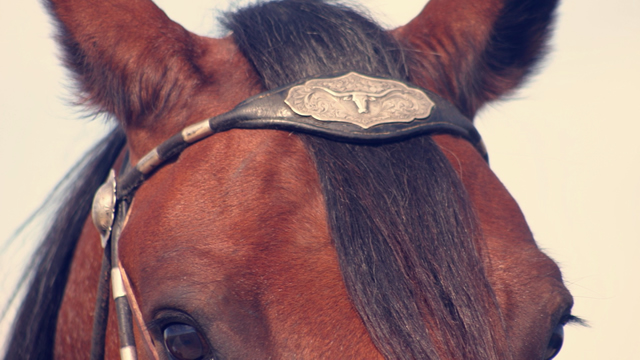Written by Martin Black
This article originally appeared in Eclectic Horseman Issue No.69
For the most part, horses are relatively calm, quiet animals when they are left to maintain themselves. Free roaming grazers spend the biggest percent of their time relaxed and quiet, but when confined and fed high-energy feed they can develop physical and mental issues.
When we start riding and working these animals, it seems that controlling the energy level is the root of many problems people have with their horses. But given half a chance, a horse is willing to maintain his natural disposition.
There are all different types of contraptions to put in his mouth and on his head to attempt to control this energy. On the other end there are all kinds of supplements, vitamins and nutritional experts to ensure our horses are in the very best of health and don’t want for anything.
Some of the problems I see many times are that the tools that people choose, and the way they use the tools just adds fuel to the fire. First of all people today are trained to accept obesity in horses. We may get by with obesity in older horses but with younger horses they are put in a situation like feeding a child a bunch of sugar and then expecting him to sit still in church or go to sleep. The chemistry doesn’t let it happen.
Energy, whether it is stored or fed, makes a horse want to go. The less energy inside him the less he will want to go. This doesn’t mean starve your horse, but be aware of the kind of high energy/carbohydrate feeds you are giving him like grain. There are feeds out there that maintain a healthy horse and don’t make him want to jump out of his skin.
The other big factor is fear or excitement. Horses are alert, sensitive animals, easily intimidated by someone they naturally see as one of their predators. So if we put a device on our horse, in a sensitive place and cause pain or, just the same, make him think we will cause pain, he is going to become anxious. We all know their first means of defense is flight. This means when they are intimidated by something they are going to move out; the more bothered they are the faster they are going to move.
There is an old saying “ride a fast horse slow and a slow horse fast.” Meaning if the rider has a lot of energy in their body, the horse will speed up. If the rider doesn’t have as much energy the horse will slow down. This may or may not happen in minutes, but it will over a period of hours or days in most cases, even with people that don’t have any horsemanship skills.
When the person relaxes and their rhythm is slower than the horse the horse will eventually try to get in rhythm with the person. The same effect takes place when the person is tense or faster than the horse’s rhythm.
Often a rider may not realize he is creating anxiety in the horse with his rhythm or quick hands. When we take ahold of the reins quickly and the horse doesn’t know or doesn’t have time to position himself and respond with his feet, the pain from the bit or even the anticipation of it coming can cause anxiety.
This is where slower, softer hands with a milder bit (one with less leverage, chains, or sharp corners to pressure them), would allow them to be more comfortable. Often with horses, “less is more.” The less we do, the more we get done. By trying to do more with more bridle, we end up with less control. The horse is more comfortable in rhythm with us. Whether they know their job and can perform to our expectations is another thing, but they are willing and able to get their body rhythm with ours if we can realize a few simple mistakes that are making it difficult for them.
Overfeeding and underworking creates stored energy. Fear or anticipation of pain from a bridle or quick hands creates energy. The person’s body rhythm can cause the horse to be more energetic. Being able to realize and evaluate these things may help you to avoid some frustration or maybe even injury, and your horse will be a lot happier too.
This article originally appeared in Eclectic Horseman Issue No.69
https://eclectic-horseman.com/mercantile/horse-training-dvds/fundamental-horse-training/martin-black-roundpen-to-arena-series/


